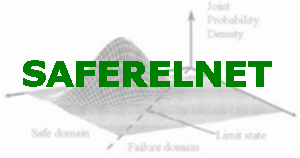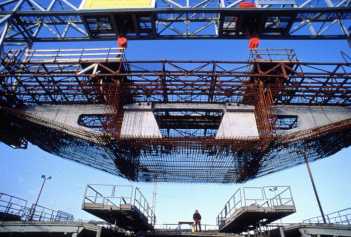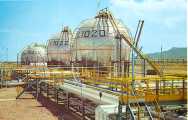 |
 |
 |
 |
| Thematic Network on Safety and Reliability of Industrial Products, Systems and Structures | |||
| segunda-feira, 15 de dezembro de 2025 | |||
       |
| WP 7 - Risk and Cost Based Inspection and Maintenance Planning | ||||||
|
WP Leader: IST Objectives Review of the methods used to conduct risk-based inspection and maintenance planning. Analysis of the models of functional and structural degradation due to ageing, corrosion and fatigue. Discussion of the methods for describing and evaluating the efficiency in the detection of faults, anomalies and defects during inspections. Analysis and inclusion of the models, which account for the outcome of the repair operations and their effect on the structural and system reliability. Development of decision models, including costs as well as safety aspects, to be embedded within efficient maintenance policy optimisation algorithms. Review of the methods of dependability analysis of complex multi-state systems, with possible multi-failures modes, with respect to their different properties of services: performance, continuity, real-time response, ability to avoid catastrophic failures, etc. This Workpackage will produce a Methodology Guidance Document presenting a unified framework for maintenance management of plant & equipment, and structural systems. This requires an integration of techniques such as Risk-Based Inspection and Maintenance (RBIM), Reliability Centred Maintenance (RCM), Reliability-Availability-Maintainability (RAM). This guidance document produced in WP7 will be based on the Methodology Guidance Document presenting a unified methodology for risk assessment combining Quantitative Risk Analysis, Human & Organisational Factor Analysis and Structural Reliability Analysis, which will be produced by WP2, 3, 4 and 5. Task 7.1 Framework for and approaches to RBIM Task leader: ETHZ In this task the basic formulations for reliability-based techniques for inspection and maintenance planning are reviewed from a Bayesian decision theoretical point of view. Formulations for rational and/or economic optimal planning are established on that basis. The data required and the numerical calculations needed by the formulations have to be accessible and limited such that the methods can be used in practical applications. Task 7.2 Models of Degradation Phenomena Task leader: NTNU This task reviews the models of different degradation phenomena (e.g. corrosion and crack-growth) at both the component and system levels. The systems considered comprise load-carrying structures, transportation systems in the form of roads and pipelines, as well as different types of equipment existing in industrial plants. Different types of materials are considered, and key differences between the different types are highlighted. Furthermore, the impact of degradation on serviceability criteria are addressed in addition to those related to the Ultimate and Fatigue limit states. Key parameters for each of the degradation models, and corresponding probability distributions for these parameters are identified. Application of structural reliability formulations versus other formulations such as Markov-processes is elaborated. Task 7.3 Reliability of Inspection and Condition Monitoring Procedures Task leader: COWI In this task the main emphasis will be directed towards the probabilistic modelling of the quality of inspection and monitoring methods relevant to the application areas in different industries. Inspection quality models will be established in agreement with the requirements implicitly specified under task 7.1. This implies that the probability of detection will be given together with the accuracy of detection, for the relevant inspection and monitoring methods. A literature review will be performed to collect previous efforts in this direction. Thereafter the most commonly used inspection and monitoring methods for the different application areas will be identified and to the extent possible probabilistic models of the quality of these inspection methods will be formulated and if data are available they will be adapted to these.
Task 7.4 Consequence
modelling (costs, safety, environmental) |
||||||
| (Back) | ||||||
| Home | Overview | Structure | Workplan | Members | Meetings | Login |
| ©
2002 SAFERELNET Optimized for Internet Explorer 5+ |